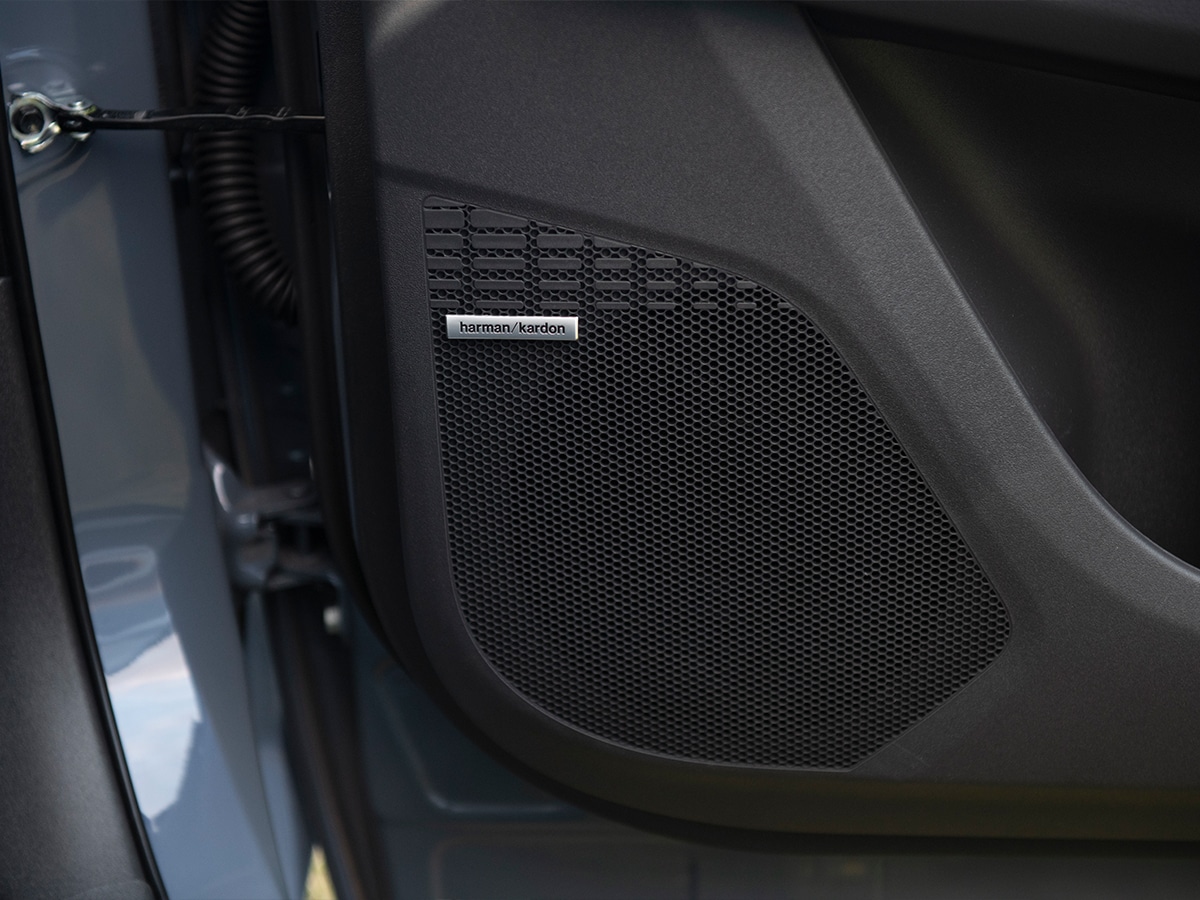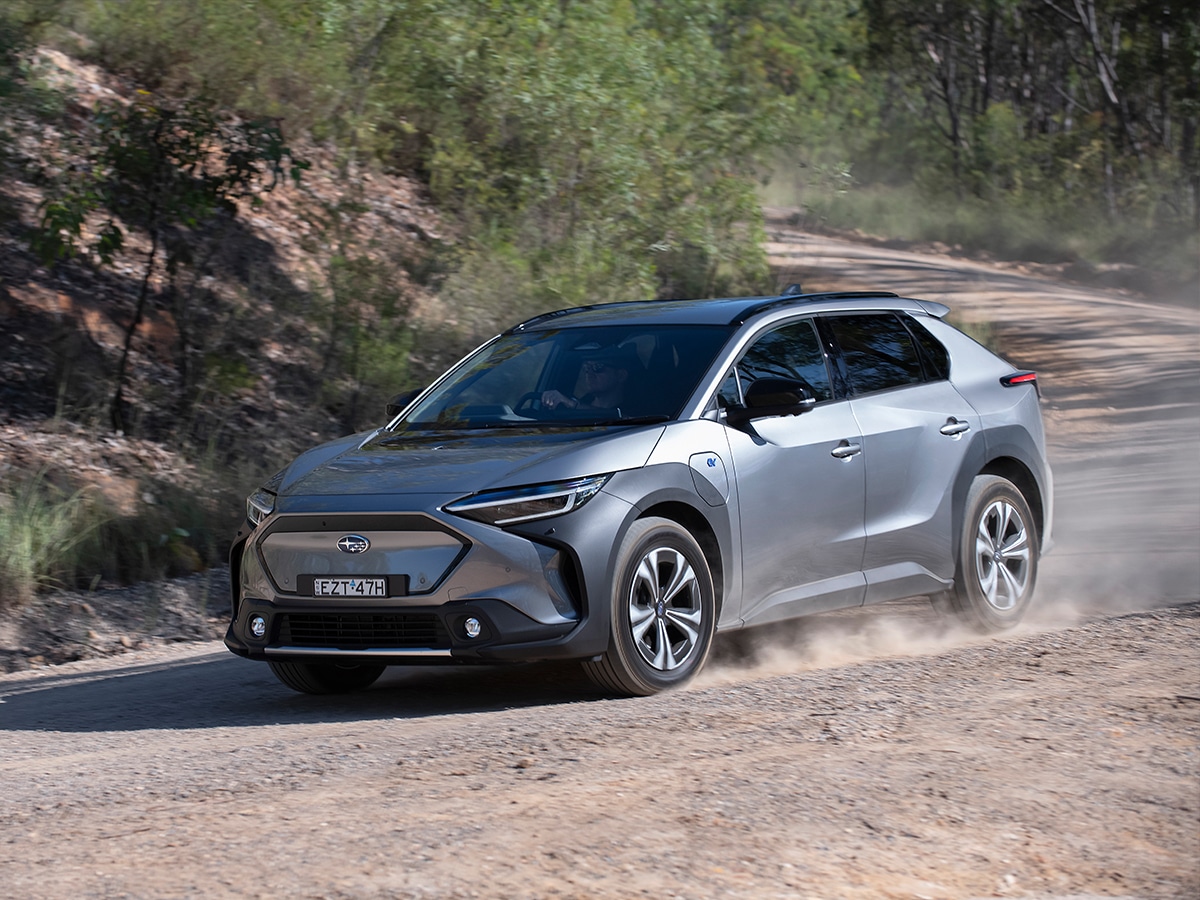
Published:
Readtime: 8 min
Every product is carefully selected by our editors and experts. If you buy from a link, we may earn a commission. Learn more. For more information on how we test products, click here.
Subaru has long been the blueprint for adventure-seeking outdoor enthusiasts in Australia, embodying the essence of exploration with vehicles that are as versatile as they are dependable. Known for the iconic wagon format, Subaru has cemented its status not just as a car manufacturer, but as a companion for those who like to get out and explore. However, as the automotive landscape shifts towards sustainability, Subaru has approached the EV party with cautious steps, seemingly arriving later than some of its contemporaries.

In the transition from internal combustion engines to electric, many car models have faced challenges, particularly when their appeal is heavily tied to the roar and performance of their engines (ciao Maserati). Unlike these brands, Subaru’s allure has never been solely about what lies under the hood.
While the brand boasts a loyal following of die-hard boxer engine enthusiasts, for the majority, the true appeal of a Subaru has been its rugged adventure capabilities, utility, and unwavering reliability. In this light, the shift to electric powertrains is not a compromise but an enhancement, promising to add a new dimension to Subaru’s well-established appeal without sacrificing its core values.
With this evolving narrative, I was invited to experience firsthand how the new Solterra upholds Subaru’s commitment to adventure in the electrified era.

Exterior Design
The Subaru Solterra ushers in a new era for Subaru, marrying the brand’s renowned ruggedness with the sharp, efficient lines expected of modern EVs. This fusion is evident in the Solterra’s design, which incorporates Subaru’s traditional aesthetic cues into an aerodynamically efficient form. The silhouette boasts a sleek and contemporary wagon profile, aligning with current design trends while retaining some inspiration from the past.
Key elements such as the pronounced wheel arches reflect the vehicle’s off-road capabilities, providing not just aesthetic appeal but functional protection against rough terrains. The Solterra’s unique front fascia, marked by a bold hexagonal motif, and Subaru’s signature C-shaped headlamps reaffirm the brand’s design language, adapting it seamlessly to the demands of electric vehicle architecture.

Further enhancing its exterior are the aerodynamic features integrated into its design. From the ducktail spoiler to the lower diffusers, each component contributes to Solterra’s performance by reducing drag and improving efficiency – crucial aspects for maximising range. These elements don’t just serve functional purposes; they also sculpt a distinctive stance that sets the Solterra apart from both its Subaru predecessors and its electric contemporaries.
The thoughtful inclusion of practical features like 18-inch alloy wheels, dusk-sensing LED headlights, and a power tailgate underscores Subaru’s commitment to blending form with function, ensuring the Solterra is as practical as it is stylish. It signals a commitment to efficiency without sacrificing the rugged, adventurous spirit that has long defined Subaru.

Interior Design and Technology
The Subaru Solterra’s interior marks a significant departure from the traditional Subaru aesthetic, almost to the point where it is unrecognisable. The cabin presents an intriguing blend of elements, from the extended steering column and distant instrument panel to the dramatic plastic cladding, which together project a forward-thinking design philosophy.
Although cleaning might pose a challenge with all those angles, there are plenty of hard-wearing cloth materials for the dash and soft-touch synthetic surfaces across the doors for easy wipe-downs.

In terms of screens, Subaru has replaced the conventional portrait display found in much of its range with a landscape-style panel, reflecting a shift towards design cues more commonly associated with current Toyota models. While the infotainment system boasts decent response times and compatibility with Apple CarPlay, it’s lacking a few shortcuts that would make on-the-fly adjustments much easier.
Practicality within the Solterra’s cabin is commendable, characterised by a spacious and thoughtful design. The layout includes ample storage solutions, with multiple nooks and crannies enhancing the vehicle’s utility. Visibility from the driver’s seat is great, supported by a high SUV-like seating position that many will appreciate. Despite the unconventional floating instrument cluster, ergonomically, the Solterra is fantastic.

Passenger comfort is equally as impressive, offering generous arm and legroom, complemented by practical features such as multiple bottle holders, a significant storage cut-away beneath the centre console, and a variety of USB outlets. The rear seating area does not skimp on space or amenities either, providing generous legroom and headroom, heated seats in the Touring grade, and additional USB-C ports.

On-Road Driving
Driving the Subaru Solterra around Beechmont revealed a nuanced balance between familiar Subaru comfort and the distinct smoothness of electric propulsion. The car is equipped with a dual-motor system delivering 160kW and 337Nm, split evenly between the front and rear axles. This setup emulates Subaru’s renowned ‘Symmetrical all-wheel drive’ in an electric context, only now there’s all of that torque available instantly, rather than waiting for that boxer to hit the sweet spot on the curve.
While the Solterra’s power may not set new benchmarks when compared to some all-wheel-drive competitors, it finds its strength in sufficiency rather than excess. The vehicle’s performance seems tailored for smooth, predictable handling over sheer power. Steering in the Solterra remains faithful to the brand’s lineage, offering balanced weighting and a pleasant driving feel that adapts seamlessly to varying scenarios.

The ride quality stands out, reflecting a step forward in Subaru’s suspension tuning. Free from the harshness sometimes found in electric vehicles laden with heavy batteries, the Solterra maintains a composure over different surfaces that rivals its gas-powered counterparts. This poise is a testament to Subaru’s engineers, who have clearly spent some time behind the scenes getting the ride spot on.

Off-Road Driving
Despite its electric underpinnings, the Solterra does not shy away from the rough stuff. Its balanced and compliant ride quality extends beyond Queensland’s B roads, holding its own on dirt, rocks, and creeks. This is where the Solterra’s dual-motor AWD setup and carefully calibrated suspension really shine, providing a level of off-road prowess that is genuinely impressive for an electric wagon.
A particularly clever feature is the Solterra’s off-road cruise control function, which allows drivers to set a low speed to maintain consistent traction and pace across difficult terrains – a clever utilisation of the vehicle’s electric motors and traction control systems. While this feature may not find everyday use, it showcases the potential for your weekend trip to the national park, or even fully-blown adventure parks like I experienced.

The only real bottleneck in the Solterra’s off-road excursions is its range. The vehicle’s WLTP-rated 414km is sufficient for daily use, but unlike your old boxer engine that you could fill basically anywhere, you currently have limited access to charging infrastructure out in the sticks. That isn’t to say you can’t still confidently take Subaru’s latest darling out on trips; there are just inherent range considerations when using an EV in 2024.

Verdict
The Subaru Solterra stands as a bold statement in the brand’s storied lineage, seamlessly merging the past with the future. It embodies the spirit of adventure that has long defined Subaru, reimagined for the electric age. While Subaru may have arrived late to the electric vehicle party, the Solterra proves that there are some advantages to waiting on the sidelines.
Crafted for the adventure-seeking, outdoor-loving Australian, the Solterra retains the rugged charm and reliability that Subaru enthusiasts have come to expect. The vehicle’s dual-motor system, offering a combined 160kW/337Nm, provides a faithful electric reinterpretation of the brand’s signature Symmetrical all-wheel drive setup, ensuring that the Solterra remains a capable companion on diverse terrains.
While it may not boast the sheer power of some of its rivals, in many ways, the Solterra doesn’t need to. It’s designed for the real world, where predictability, reliability, and ease of use take precedence. The steering and suspension offer a ride that is both familiar and refreshing, ensuring comfort on the open road and off-road trails.
However, the Solterra’s journey into the electric domain isn’t without its challenges. Its WLTP-rated driving range of 414km, while respectable, may leave range-conscious buyers wanting, especially when compared to some of the competition.
Ultimately, the Solterra is well-suited for a Subaru loyalist looking to step into the world of electric vehicles without straying too far from the familiar. It maintains the brand’s core pillars: a great ride, easy-going steering, and reliable power output, complemented by a commendable level of off-road capability and thoughtful functionalities.
In the lush landscapes of the Gold Coast hinterland, the Solterra has proven itself to be more than just an electric wagon. It’s a continuation of Subaru’s commitment to building cars that are as at home on the dirt as they are on city streets. And that, in itself, is something worth celebrating.
Disclaimer: The author of this post, Justin Jackie, was invited to drive the Subaru Solterra as a guest of the brand for the purposes of this review.





























Comments
We love hearing from you. or to leave a comment.